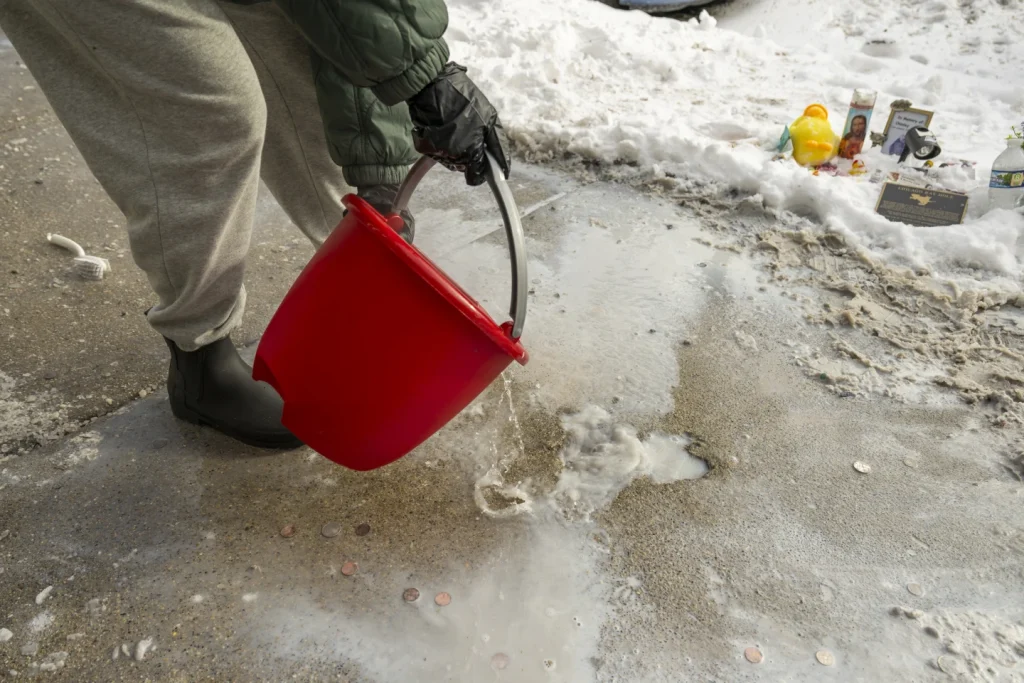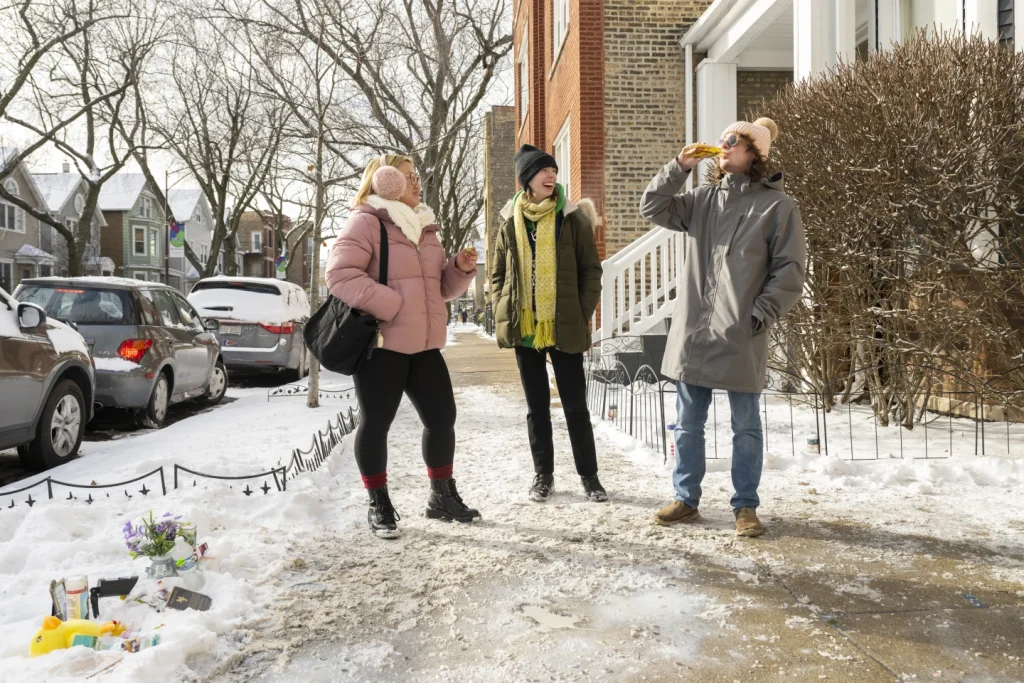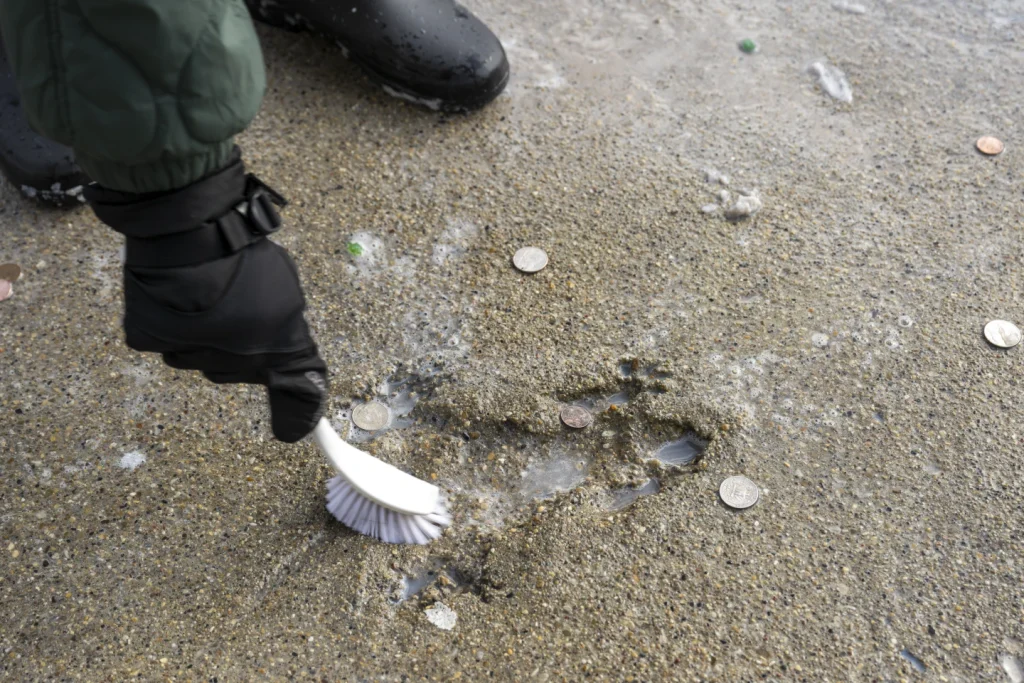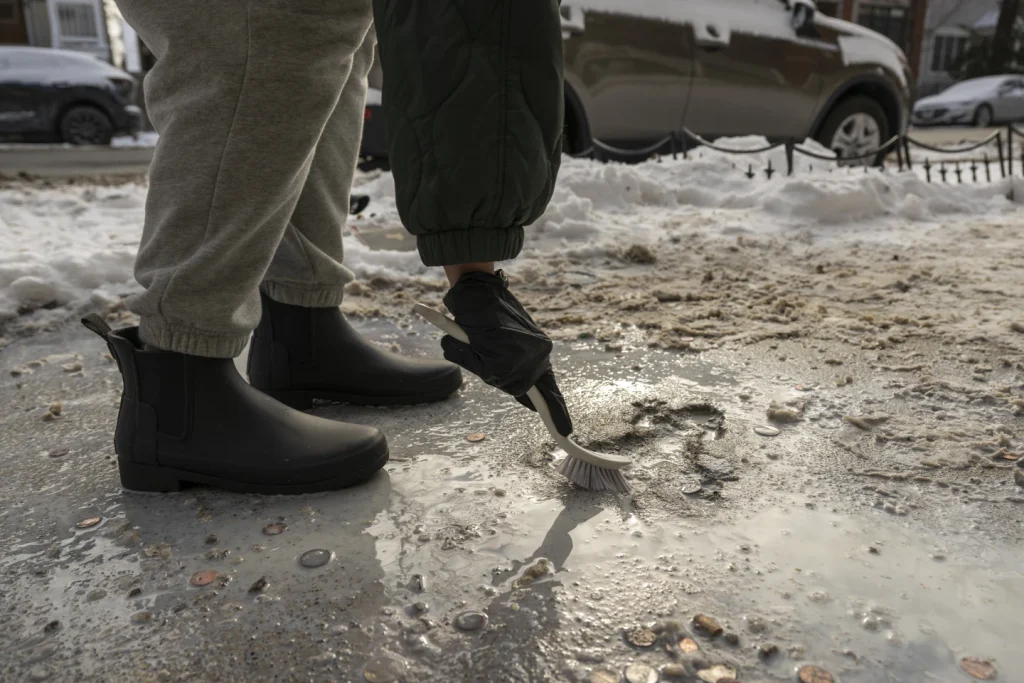The recent incident involving the filling in of the “rat hole” in a Northside Chicago neighborhood has sparked both amusement and concern among residents and officials.
This peculiar landmark, which resembles the outline of a rat complete with claws and a tail, has become a beloved feature of the area, and its sudden alteration has raised questions about the responsible party and the motives behind the action.
The city of Chicago has long been associated with a notorious gangster past, and the presence of the “rat hole” serves as a quirky reminder of this history.
Its sudden disappearance, therefore, has captured the attention of the community and has prompted speculation about the reasons behind the fill-in.
Social media played a pivotal role in bringing attention to the incident, with reports of the “rat hole” being filled with a substance resembling white plaster quickly spreading online.
This led to widespread discussion and debate among residents, who expressed their dismay at the alteration of the beloved landmark.
Officials from the Transportation and Streets and Sanitation departments have clarified that the city was not responsible for the fill-in of the “rat hole.”
This statement has only added to the mystery surrounding the incident, as the identity of the culprit remains unknown.

The possibility of the “rat hole” becoming part of Windy City lore, alongside other quirky urban legends such as Al Capone’s vault and a bronze faux feces on a fountain, has been suggested, further adding to the intrigue surrounding the situation.
The filling in of the “rat hole” raises broader questions about the preservation of public landmarks and the significance of such features in local communities.
While the incident may be seen as a lighthearted prank by some, others view it as a violation of the neighborhood’s identity and character.
The “rat hole” has become a symbol of the area, and its alteration has sparked a sense of loss and nostalgia among residents.
In conclusion, the filling in of the “rat hole” in a Northside Chicago neighborhood has ignited a mix of emotions among residents and officials.
The incident has prompted discussions about the preservation of public landmarks and the significance of quirky urban features in local communities.
As the mystery surrounding the responsible party continues, the “rat hole” remains a source of fascination and debate, serving as a reminder of the unique charm and character of the Windy City.
In the heart of a bustling city, amidst the towering skyscrapers and bustling streets, lies a peculiar spot that has captured the attention and imagination of its residents.
It is not a grand monument or a historic landmark, but rather a humble sidewalk blemish—a shallow hole that has become a source of fascination and community spirit.
On a Friday afternoon, a group of neighbors gathered, armed with brushes and water, to lovingly scrub this unassuming orifice clean, restoring it to its “ratfull” place among the city’s iconic, if not strange, attractions.
Tributes now adorn this once overlooked feature, transforming it into a makeshift memorial. Plastic flowers, a prayer candle, small toys, a pack of cigarettes, and coins have been carefully placed around the hole, creating a poignant display that speaks to the affection and quirkiness of the neighborhood.
Some have even bestowed names upon the creature that once lay there spreadeagled—“Lil Stucky” or “Chimley,” adding a touch of whimsy to the solemnity of the scene.
Jeff VanDam, a resident of the neighborhood, expressed the sentiment shared by many, stating, “Overall, people just appreciate that our wonderful block is getting attention—even if it’s to look at a rat hole.
It’s a small, quirky feature of a neighborhood where we get used to it, we care about it, and we want to protect it.”

This sentiment encapsulates the deep connection that the community shares with this unassuming spot, transcending its seemingly mundane appearance to become a symbol of their collective identity and pride.
The story of the “rat hole” gained widespread attention when Chicago resident Winslow Dumaine shared a photo of it on X, formerly known as Twitter.
The image quickly went viral, garnering over 5 million views and capturing the imagination of people far beyond the neighborhood’s borders.
This unexpected fame brought the spotlight to this unassuming location, drawing people from all walks of life to witness the curious spectacle and partake in the communal spirit that has emerged around it.
The fascination with this peculiar spot speaks to the human inclination to find beauty and intrigue in the most unexpected places.
It serves as a reminder that the essence of a community lies not solely in its grand architecture or renowned landmarks, but also in the idiosyncrasies and unique character that define its everyday life.
In a world often dominated by grandeur and spectacle, the “rat hole” stands as a testament to the power of the ordinary to captivate and unite.
The outpouring of attention and affection for this unassuming feature underscores the profound impact that seemingly insignificant elements of our surroundings can have on our lives.
It serves as a testament to the resilience and creativity of human spirit, as well as the capacity for communities to find joy and meaning in the most unlikely of places.
The “rat hole” has become a symbol of the neighborhood’s ability to embrace the unconventional and celebrate the beauty in the overlooked.
As the story of the “rat hole” continues to unfold, it serves as a powerful reminder of the richness and depth that can be found in the everyday tapestry of urban life.
It prompts us to look beyond the surface and seek out the hidden treasures that lie in the most unexpected corners of our cities.

In a world that often rushes past the seemingly insignificant, the “rat hole” stands as a poignant reminder of the beauty that can be found in the most unassuming places, and the enduring power of community to turn the ordinary into the extraordinary.
The imprint of a rat hole in Chicago has become a topic of discussion among the locals, with some claiming it to be the work of a squirrel.
This seemingly trivial incident has garnered attention from thousands of people, turning it into a viral sensation.
While some may view it as a silly matter, others see it as a heartwarming joke that has brought the community together.
According to Dumaine, a resident living nearby, the imprint has been present for nearly two decades, sparking curiosity and amusement among the locals.
The fact that so many people have become involved in this lighthearted joke speaks to the power of community and the ability to find humor in the most unexpected places.
Dumaine also highlighted the unique culture of Chicago, emphasizing the city’s pride in its resilience and ability to overcome challenges.
Despite the city’s well-known aversion to rats, there is a certain fondness for these creatures that is deeply ingrained in the culture.
This paradoxical relationship with rats reflects the complexity of Chicago’s identity and the ability of its residents to find humor and joy in unexpected places.
The widespread attention given to the rat hole imprint serves as a reminder of the importance of finding moments of levity and connection in our daily lives.
In a world that is often filled with serious and weighty issues, it is refreshing to see people coming together to share in a lighthearted joke.
This incident also highlights the power of social media in bringing people together and creating a sense of community, even in the most unlikely of circumstances.
Furthermore, the fact that this seemingly insignificant event has captured the attention of thousands of people speaks to the universal human desire for connection and shared experiences.
It is a testament to the ability of humor to transcend boundaries and bring people together, regardless of their background or beliefs.
In conclusion, the imprint of a rat hole in Chicago has become a symbol of community, humor, and the unique culture of the city.

What may have initially seemed like a trivial matter has blossomed into a heartwarming joke that has brought people together and sparked widespread conversation.
This incident serves as a reminder of the power of humor and connection in our daily lives, and the ability of seemingly insignificant events to unite people in unexpected ways.
It is a testament to the resilience and spirit of the people of Chicago, and a reflection of the universal human desire for shared experiences and moments of joy.
